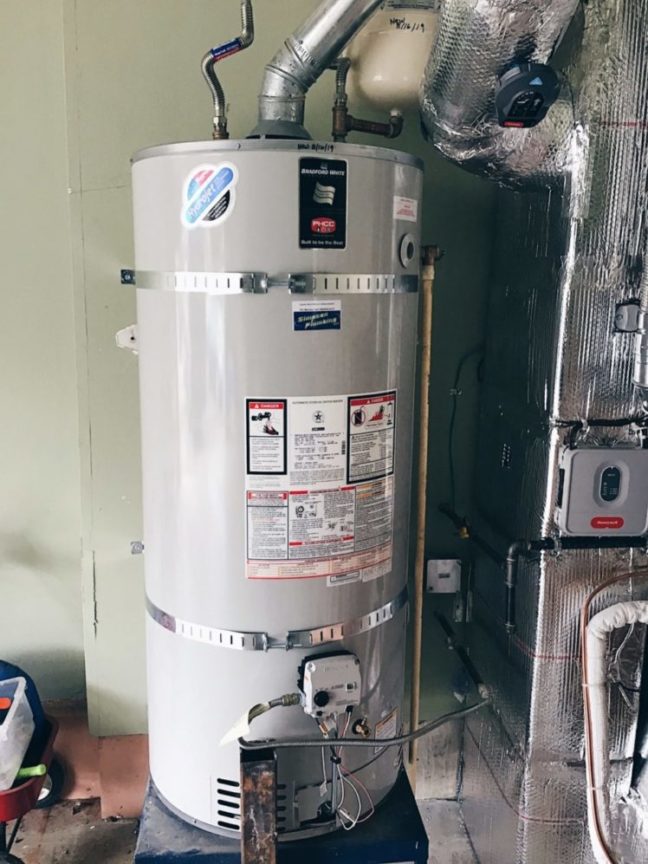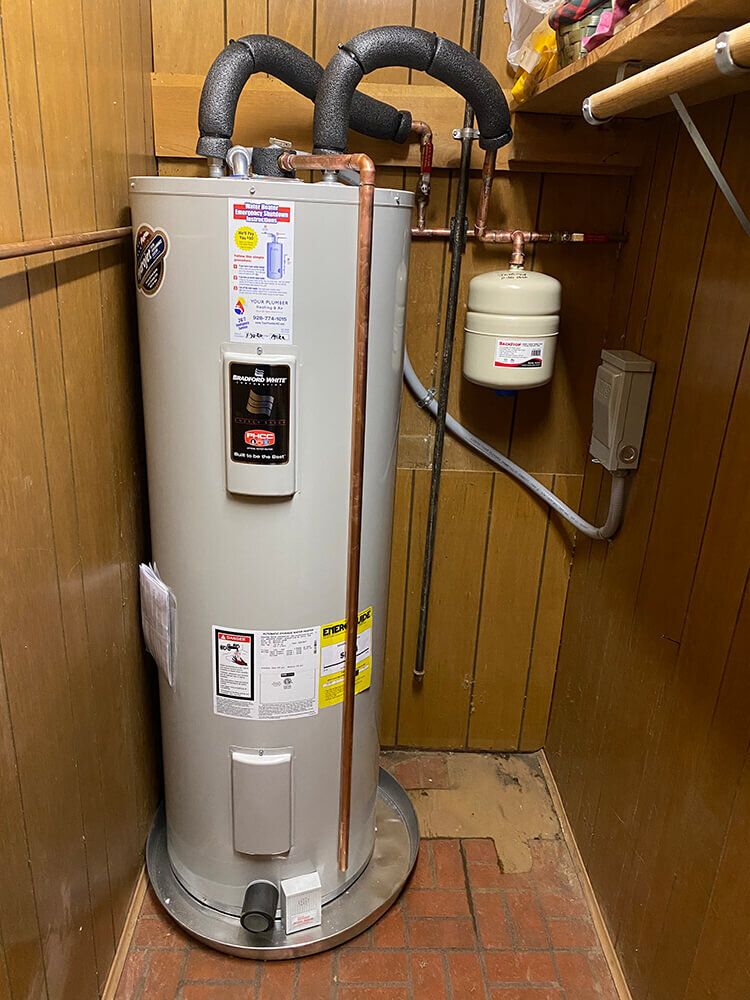Comprehensive Drain Cleaning Services to Promote Healthy Plumbing
Comprehensive Drain Cleaning Services to Promote Healthy Plumbing
Blog Article
Full Overview to Water Heating SystemInstallation and Replacement
Recognizing the ins and outs of hot water heater installment and replacement is important for house owners looking for to ensure performance and integrity in their hot water supply. From choosing the proper type and dimension to executing a seamless setup procedure, several variables must be thought about to prevent typical challenges. This guide will certainly give you with the necessary steps and insights to browse the complexities of this home renovation job, while additionally stressing crucial maintenance methods that can extend the life of your system. As you check out these elements, you might find yourself reassessing your present configuration and identifying areas for improvement.
Kinds Of Hot Water Heater
When taking into consideration water heater installation and substitute, it is necessary to recognize the various sorts of hot water heater readily available out there. The most common types consist of storage tank water heaters, tankless water heating systems, heatpump water heating units, and solar water heating units.
Tank hot water heater are standard systems that store a specific volume of warm water, making them readily offered when needed. They are usually less costly ahead of time but might incur greater energy prices gradually due to warm loss. In contrast, tankless water heating units offer warm water as needed, removing the need for storage space. They are power effective and can conserve space, however their initial expenses are commonly higher.
Heatpump hot water heater make use of electrical energy to move warmth from the air or ground to warmth water, providing considerable power cost savings but needing even more room and specific installation problems. Lastly, solar hot water heater harness solar power to warm water, giving a green choice with prospective long-term price savings, although they usually call for a backup system for over cast days.
Comprehending these options ensures educated choices regarding installation and substitute, providing to particular needs and preferences.
Selecting the Right Size
Picking the ideal dimension for a water heating unit is essential to ensure optimal efficiency and effectiveness. An unit that is also little will battle to fulfill home demands, bring about irregular hot water availability and raised power usage. On the other hand, a large water heater can cause unnecessary energy waste and greater utility expenses.
To identify the appropriate size, take into consideration the home's optimal hot water use. This can be computed based upon the number of owners and their common warm water needs. For instance, a family of four might require a water heating system with a capacity of 50 to 80 gallons, depending upon the use patterns, such as simultaneous showers and washing.
Additionally, examine the recovery rate, which gauges how swiftly a heating system can replenish warm water after it has actually been utilized. For tankless versions, concentrate on the circulation rate, measured in gallons per min (GPM), to guarantee it meets the family's simultaneous demand.

Setup Refine Summary

Next, the old device needs to be detached and removed, making sure to adhere to regional codes and guidelines relating to disposal. As soon as the old system is out, the new water heater can be placed in position. This action includes connecting the water supply lines, making sure that all fittings are leak-free and safe and secure.
After establishing water links, it's necessary to link the power supply, whether electrical or gas, complying with the producer's instructions thoroughly. Once all links are made, the system ought to be loaded with water, and the power can be turned back on. It's essential to inspect for leakages and ensure the water heating unit is working appropriately before completing the setup procedure.
Usual Installation Mistakes

An additional regular error is neglecting to comply with neighborhood codes and guidelines. Failing to stick to these requirements can not only lead to security hazards yet may likewise result in costly penalties or the need for expensive reinstallation.
Failing to secure links or making use of the incorrect type of fittings can lead to leakages and water damages. By preventing these common installation mistakes, property owners can guarantee their water recommended you read heating system runs safely and effectively, optimizing performance and longevity.
Maintenance Tips for Longevity
Proper maintenance of a water heater is vital for its longevity and optimum efficiency. Routine assessments and servicing can protect against pricey repair services and extend the device's life-span. Begin by checking the temperature level setting; it should generally be set between 120 ° F and 140 ° F for optimum power effectiveness and safety.
Every 6 months, flush the container to eliminate sediment accumulation, which can hinder heating effectiveness and trigger rust. To do this, switch off the heating unit, connect a hose to the drain shutoff, and let the water run up until it is clear.
Anode poles need to be examined each year and replaced when they are rusted. These poles aid prevent storage tank deterioration by attracting destructive components in the water.
In addition, check the pressure safety valve frequently to guarantee it is operating appropriately. This shutoff is vital for stopping too much stress buildup within the tank.
Finally, take into consideration setting up a specialist upkeep check every few years for complete examinations and maintenance. By sticking to these maintenance pointers, property owners can significantly improve the efficiency, safety and security, and life-span of their water heating systems, ensuring reputable hot water for many years to find.
Final Thought
In conclusion, appropriate installation and upkeep of water heaters are critical find out here for making certain efficiency and long life. By comprehending these important facets, property owners can attain a reputable warm water supply while lessening potential problems related to water heating system operation.
Comprehending the complexities of water heating system setup and substitute is essential for home owners looking for to ensure performance and reliability in their warm water supply.Tank water heating systems are standard systems that store a details volume of warm water, making them conveniently offered when required. In comparison, tankless water heaters give hot water on demand, removing the need for storage space. Choosing a water heater that is either also little or too big can lead to ineffectiveness, resulting in insufficient hot water supply or too much energy consumption.
By understanding these crucial facets, homeowners can accomplish a trusted hot water supply while reducing prospective concerns related to sites water heating unit procedure. drain cleaning.
Report this page